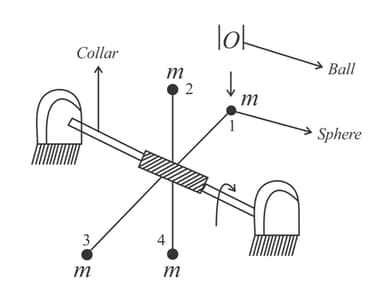Two identical rings which can slide along the rod are kept near the midpoint of a smooth rod of length The rod is rotated with constant angular velocity about the vertical axis passing through its center. The rod is at height from the ground. Find the distance (in meter) between the points on the ground where the rings will fall after leaving the rods.
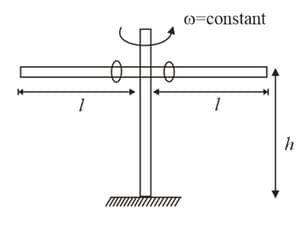


Important Questions on Circular Motion
A table with the smooth horizontal surface is placed in a cabin which moves in a circle of a large radius (figure). A smooth pulley of a small radius is fastened to the table. Two masses and placed on the table are connected through a string over the pulley. Initially, the masses are held by a person with the string along the outward radius and then the system is released from rest (with respect to the cabin). Find the value of , where is the magnitude of the initial acceleration of the masses as seen from the cabin and is the tension in the string.
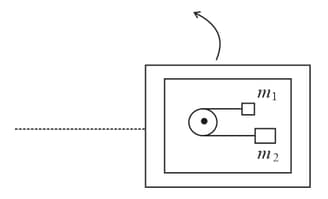
A uniform square plate of mass m is supported as shown. If the cable suddenly breaks, determine just after that moment
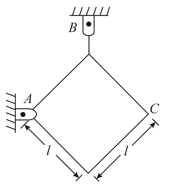
(a) The angular acceleration of the plate.
(b) The acceleration of corner .
(c) The reaction at .
Disk has a mass of and a radius , it is at rest when it is placed in contact with the belt which moves at a constant speed Knowing that between the disk and the belt, determine the number of revolutions executed by the disk before it reaches a constant angular velocity. (Assume that the normal reaction by the belt on the disc is equal to weight of the disc). Take

Three particles and each of mass are connected to each other by three massless rigid rods to form a rigid, equilateral triangular body of side . This body is placed on a horizontal frictionless table ( plane) and is hinged to it at the point , so that it can move without friction about the vertical axis through as shown in the figure. The body is set into rotational motion on the table about with a constant angular velocity .
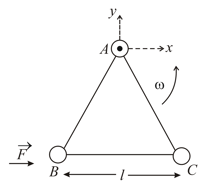
(a) Find the magnitude of the horizontal force exerted by the hinge on the body.
(b) At time when the side is parallel to the -axis, a force is applied on along as shown. Obtain the -component and the -component of the force exerted by the hinge on the body, immediately after time .
A small spherical ball of mass is rolling without slipping down the loop track as shown in the figure. The ball is released from rest on the linear portion at a vertical height from the lowest point. The circular part as shown in figure has a radius
(a) Find the kinetic energy of the ball when it is at a point , where the radius make an angle with the horizontal.
(b) Find the radial and the tangential accelerations of the centre when the ball is at .
(c) Find the normal force and the frictional force acting on the ball if
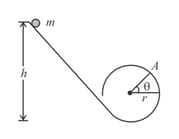
Figure shows a mechanical system free of any dissipation. The two spheres are each of equal mass , and a uniform connecting rod of length has mass . The collar is massless. Right above the position of sphere in Fig. is a tunnel
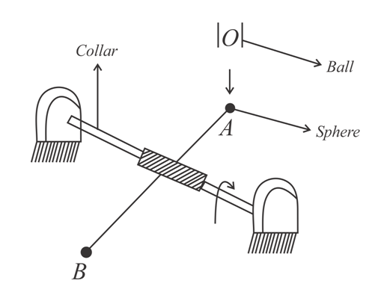
from which balls each of mass fall vertically at suitable intervals. The falling balls cause the rods and attached spheres to rotate. Sphere when reaches the position now occupied by sphere , suffers a collision from another falling ball and so on. Just before striking, the falling ball has velocity . All collision are elastic and the spheres as well as the falling balls can be considered to be point masses.
(a) Find the angular velocity of the assembly in terms ofafter the ball has struck it.
(b) The rotating assembly eventually assumes constant angular speed . Obtain in terms of and by solving the equation obtained in part (a). Argue how a constant does not violate energy conservation. Argument
(c) Solve the expression obtained in part (a) to obtain in terms of .
(d) If instead of a pair of spheres, we have two pairs of spheres as shown in figure below. What would be the new constant angular speed of the assembly (i.e. the answer corresponding to part (b).
